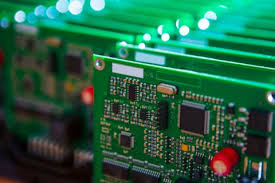When developing a new electronic device, ordering a prototype PCB is a crucial step that can define the success of your project. Here are key considerations to keep in mind to ensure that your prototype PCB accurately represents your final product’s vision and functionalities.
Define Your Requirements Clearly
Before ordering your prototype, have a clear understanding of what you are trying to achieve. Specify your electrical requirements, including voltage and current levels, and detail the operational environment where the PCB will function. This information will guide the PCB manufacturer in selecting the right materials and processes to meet your needs. For instance, if your PCB is to operate under high-temperature conditions, you might require materials with higher glass transition temperatures than standard FR4, which typically withstands up to about 130 degrees Celsius.
Choose the Right Manufacturer
Selecting a manufacturer with expertise in prototype pcb production is critical. You want a partner who can provide not just manufacturing services but also guidance and troubleshooting expertise. Check the manufacturer's track record for producing high-quality prototypes and their ability to meet tight deadlines. Additionally, ensure they offer good communication and support throughout the manufacturing process.
Consider the Prototype’s Complexity
The complexity of your prototype will impact both the cost and the manufacturing time. Include essential features that will test the PCB’s functionality but avoid overly complex designs that are costly and time-consuming to produce. If your project has multiple stages, consider developing a series of prototypes, each building on the previous version's tested and improved features.

Understand the Costs and Lead Times
Be aware of the costs associated with different types of prototypes. A basic single-layer PCB can be relatively inexpensive and quick to produce, whereas a multi-layer PCB with high-density interconnects (HDI) technology will cost more and take longer. Clarify the cost breakdowns and expected lead times with your manufacturer to ensure they align with your project's budget and timeline.
Check Prototyping Capabilities
Ensure that the manufacturer's prototyping capabilities match your requirements. This includes their ability to work with the specific materials, their precision in trace and space widths, and their drilling accuracies. Modern PCB designs often require fine features and tight tolerances, so the manufacturer’s equipment and technological capabilities must be up to the task.
Incorporate Testing and Quality Assurance
Integrate testing and quality assurance into your prototype production. This includes electrical testing to detect any potential short circuits or open circuits, as well as inspecting for any physical defects. Some manufacturers offer additional testing services such as thermal testing or X-ray inspection, which can be beneficial depending on the complexity of your PCB.
Prepare for Adjustments
Finally, be prepared to make adjustments based on the prototype’s performance. The primary purpose of a prototype is to uncover unforeseen issues and test theories in real-world conditions. Feedback from this stage should be used to refine the PCB design before moving to mass production.
By considering these factors, you can ensure that your prototype PCB serves as a reliable and effective blueprint for your final product, helping to mitigate risks and optimize performance.
